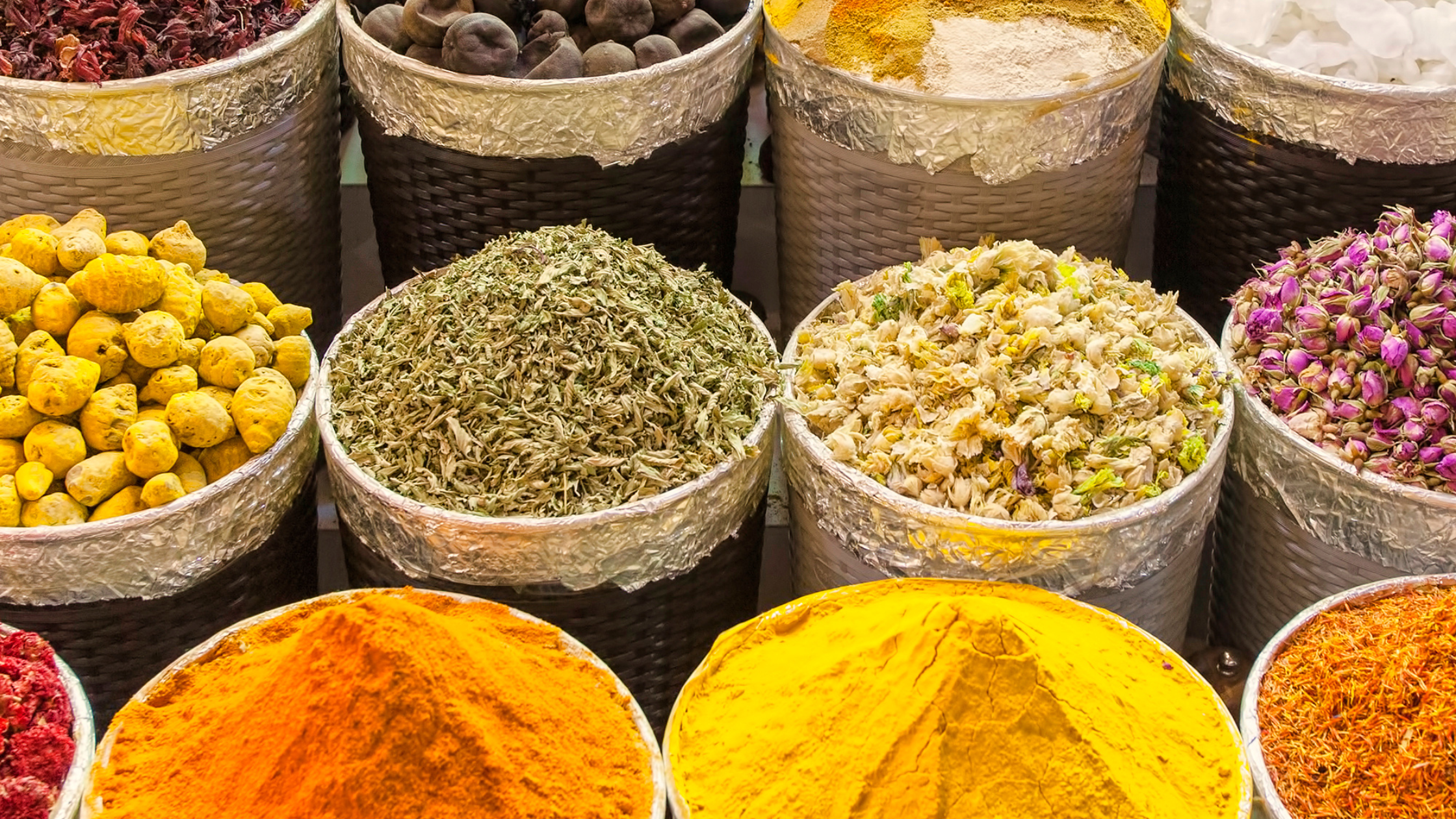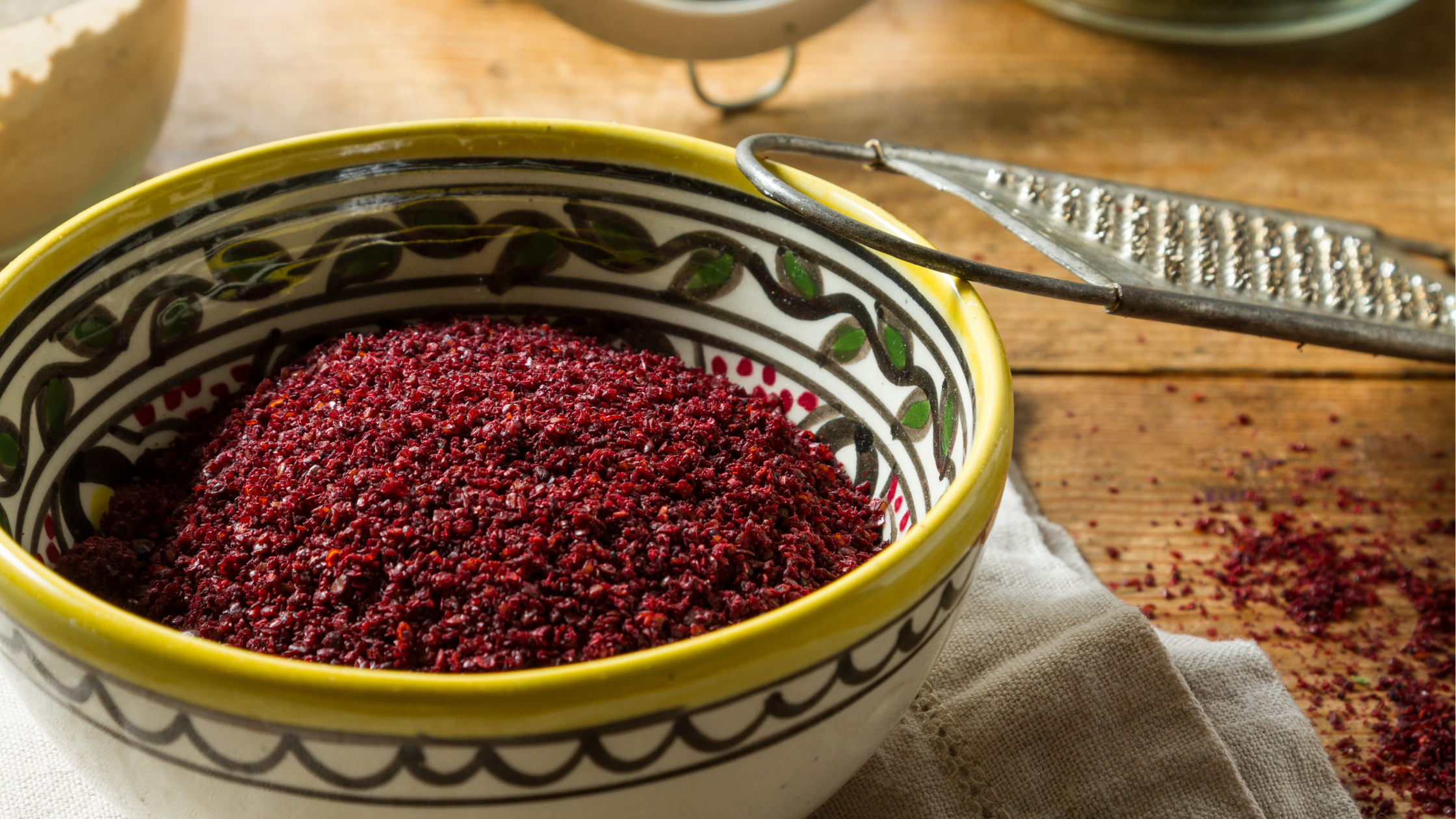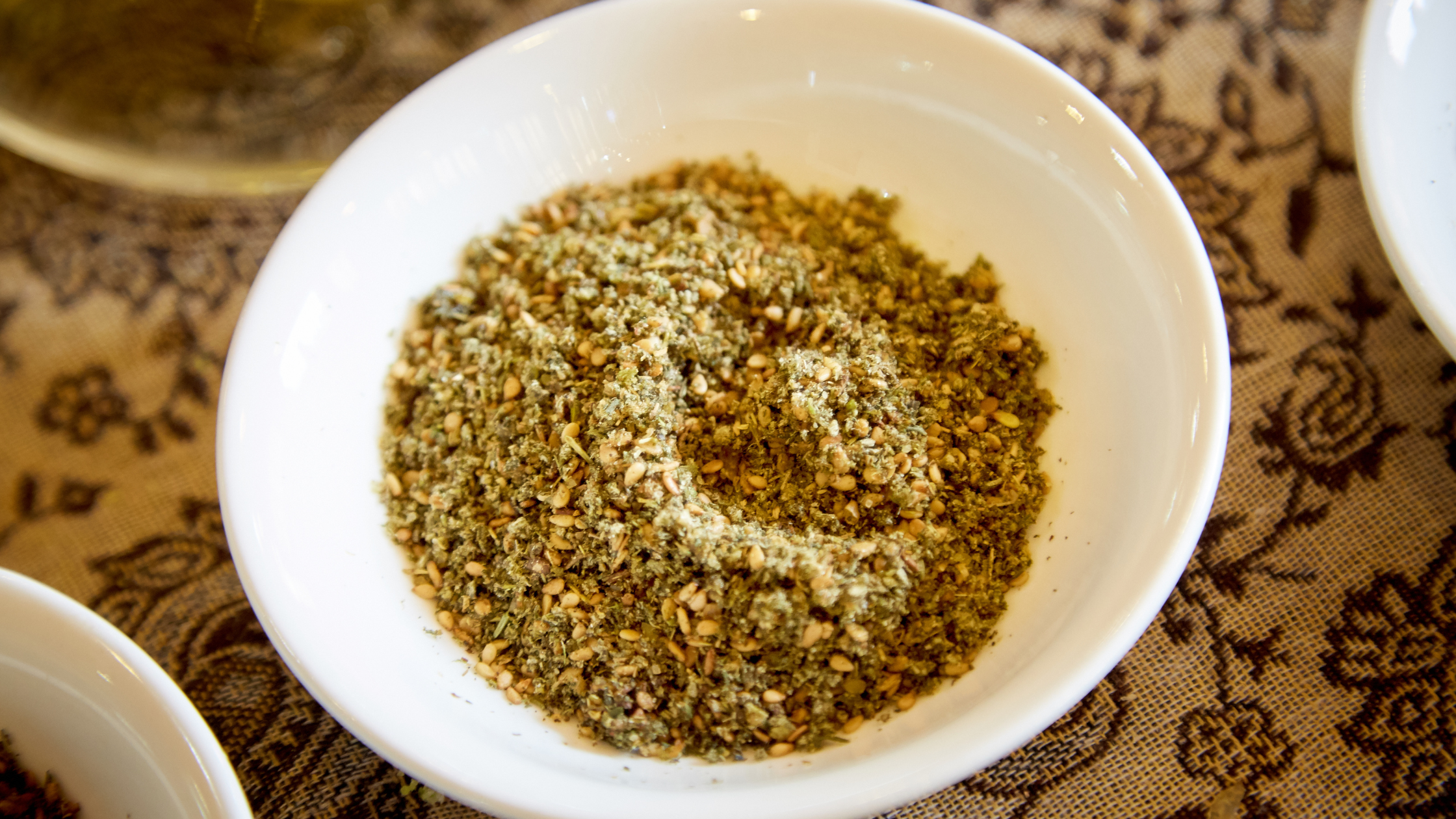Learn about Arab American Culture
March 28, 2024

Stop by the second-floor Help Desk to pick up a spice packet, while supplies last. You can create a delicious recipe at home and learn a little about the food traditions and culture of Arab American friends and neighbors.
In 2023, President Biden officially proclaimed April as National Arab American Heritage Month (NAAHM). After years of effort, what began in 2017 as a grassroots movement with the Arab America Foundation is now a nationwide celebration honoring the contributions and diversity of the Arab American community.
The month celebrates Arab Americans who may have roots in any of 22 countries: Algeria, Bahrain, the Comoros Islands, Djibouti, Egypt, Iraq, Jordan, Kuwait, Lebanon, Libya, Morocco, Mauritania, Oman, Palestine, Qatar, Saudi Arabia, Somalia, Sudan, Syria, Tunisia, the United Arab Emirates, and Yemen. These countries are diverse, but they share a language, as well as aspects of culture and history. An estimated 3.7 million Americans have connections to an Arab heritage. Illinois, specifically, is home to a large Arab American population and is one of the first states to have passed legislation recognizing NAAHM.
This heritage month is an opportunity to learn about and celebrate the customs and traditions of Arab Americans, and the library is happy to provide some information and inspiration to help us make connections with this culture. Food is key to understanding culture–tastes, smells, and even colors can help tell stories of our identities. Flavors transport us, and recipes link us to specific people and places. This is especially true as people travel, emigrate, and live away from their homelands.
Although the following ingredients and recipes can’t wholly reflect the cuisine (or traditions and heritage) of any one particular country or region, they illustrate some of the common threads that run through Arab America. We hope they will add some diversity to your dinner plate and help you consider the exchange and assimilation of different cultures.
“Until fairly recently, it required time and ingenuity to track down these staples of Middle Eastern cooking, most of which were rarely seen outside of ethnic markets in communities with large immigrant populations. How things change!” (Flavors of the Sun: the Sahadi's guide to understanding, buying, and using Middle Eastern ingredients by Christine Sahadi Whelan, 16).
Sumac

Sumac berries grow in bright red clusters on bushes throughout the Middle Eastern, Mediterranean, and North African climates. Berries are dried and ground to be turned into seasoning. Because sumac grows in many places, its history, and even origin, is somewhat contested. It may have originated in Sicily, Turkey, or Iran, and the name also has several possible roots: the Old French word sumac, the Arabic word summaq, and the Syriac word summaaqa, all of which translate to “dark red.” Because of sumac’s bright color, it has also historically been used as a dye for wool and leather goods, and it has antioxidant properties that have given it medicinal uses as well.
As a spice, sumac has a very bright, acidic flavor that is often described as similar to the tang and tartness of lemon. With more floral and fruit-like qualities, it is not as acidic or bitter as lemon. Christine Sahadi Whelan notes in Flavors of the Sun, “it doesn’t add moisture or water down your sauces the way [lemon] juice does. In fact, sumac will actually draw liquid from vegetables like cucumbers and tomatoes, so wait to add it to your dishes just before serving, or it will dilute the flavors.”
Sumac is an incredibly versatile spice and can be used in everything from tenderizing and marinating meat to creating a refreshing sumac-ade beverage. Many cooks who use sumac suggest using it as a finishing agent on salads–simply sprinkled on–or adding it as a topping to rice, bread, or even popcorn. Below are some possible ways to try adding sumac to your cooking rotation:
- For Arab American Heritage Month in 2022, arabamerica.com invited folks to try a Fattoush Salad. This is traditionally a Lebanese dish.
- Msakhan (or musakhan) is a Palestinian roast chicken dish with sumac as the star.
- These Iraqi dolmas call for “quite a bit” of sumac.
Za’atar

You can level up your use of sumac by also learning about za’atar! Za’atar is a blend of spices from the Middle East with sumac being one of the main ingredients. The name za’atar refers to both a specific green herb (a variety of wild thyme in the mint family) and the seasoning blend as a whole. Most commonly, za’atar refers to the whole spice mixture.
The blend of spices varies from region to region, and even family to family. In Flavors of the Sun, Sahadi Whelan explains, “In Jordan, za’atar contains cumin; Syrians put a lot more sumac in theirs, making it appear more red than green. Aside from these local variations, za’atar always includes sesame seeds, sea salt, and some amount of sumac, for a blend of salty, tangy, and richness, plus lots of dried za’atar, which provides the herbal punch.” Za’atar is also known to contain marjoram, coriander, anise, lemon zest, and other types of thyme or oregano, depending on who is making it. The ratios change according to the specific cultural tastes and local ingredients throughout the Middle East, where people focus more on the desired flavor than on any specific recipe.
Like sumac, za’atar also has a complicated origin story, but it has been around since at least the 12th century. The herb may have originated in Palestine, but it quickly spread throughout the Levantine region. Za’atar is likely even present in the Bible (backed up by other research) and in ancient Egypt.
Za’atar has also been widely used for medicinal purposes. Cooking website Delish describes how “Hippocrates would treat the common cold with za’atar in the fifth century BCE.” This practice is likely due to the essential oils in wild thyme that result in antimicrobial, anti-inflammatory, antioxidant, and antitumor properties. There’s also a widespread belief that za’atar is brain food and has cognitive benefits. Many believe eating it before a big test can improve your grade.
Because za’atar is such a lively blend of flavors, it can be used in many ways. Simply adding it to bread or pita and olive oil is one of the easiest ways to enjoy it, or it can go in the traditional yogurt dip labini (or labneh) or the ever-popular hummus. It adds plenty of herby and tangy flavor to other simple things like bagels with cream cheese, eggs, or roasted veggies. The popular Lebanese breakfast Manakish (or manakeesh, plural man’oushe) is a za’atar-covered flatbread, and if you like that, you might also enjoy Palestinian fatayer, another take on za’atar with bread. To go even more in-depth, this recipe adds it to the sauced lamb dish mansaf, which is the national dish of Jordan.
Keep Connecting
We’ve only delved into two specific seasonings connected to Arab American culture. There are many others to explore as well. Other flavors that may be of interest are Aleppo Pepper, baharat, pomegranate molasses, and cardamom. Learn more and try other recipes with some of the library’s cookbooks, like Arabiyya: Recipes from the Life of an Arab in Diaspora by Reem Assil, or Flavors of the Sun: the Sahadi's Guide to Understanding, Buying, and Using Middle Eastern Ingredients by Christine Sahadi Whelan.
For ways to learn and get inspired that aren’t related to cooking, the library offers language learning through Mango Languages, an upcoming event for basic Arabic, as well as books in Arabic. Explore the resources below, and know that we are always happy to help find answers to your questions.
Resources and Sources
- Arab American Institute
- Arab American Anti-Discrimination Committee
- History.com's NAAHM info
- PBS.org and a list of documentaries
- U.S. State Department - The Story of Arab Americans' Beginning in America - and the Quest for Fair Representation